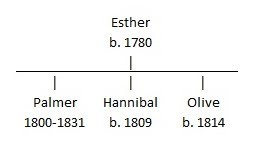Binah of Good Hope

The 1817 slave register for John Tharp's Good Hope estate lists four individuals with a mother called Binah or Bina: Beck (f) (b. 1770), Harry (b. 1773), Jenny (b. 1781) and Lucretia (b. 1783). Binah was also listed in her own right, estimated to be 75 years old (b. 1742), and described as creole (born in Jamaica). The 1820 return of 'increases' and 'decreases', the only one to include dates, recorded the death of a woman called Jenny at the age of 45 (d. 1st of June 1819). This may have been Binah's daughter, but it's impossible to be certain. Binah's own death at the age of 78 was recorded in the 1823 return. For possible children for Binah's daughters, see ' Three women called Beck on Good Hope ', ' Four women called Jenny on Good Hope ' and ' Cretia and Lucretia of Good Hope '. More about sources What are the limitations of the evidence? Isn't this too neat to be convincing? A note about the identity of fathers A note

















